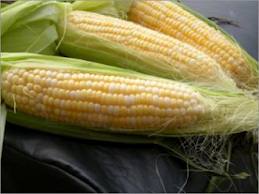Efficacy of supplementary enzymes on in vitro digestibility of various ratios of maize with wheat offal
Keywords:
Efficacy, fungal, bacterial, enzyme, digestibilityAbstract
The basic experimental diets were 4 x 5 factorial combinations of the inclusion levels of wheat offal at the expense of maize in the control diet with different enzymes. Basically the control diet had 100% of maize while in other diets 25, 50, 75 or 100% of maize was replaced with wheat offal. Each of these was replicated thrice and undertaken in the presence of no enzyme, with different types of enzymes at the recommended level or a combination of different types of enzymes. Thus were a total of 60 treatment samples and then the in vitro digestibility trial was carried out. The results showed that increase in the level of wheat offal at the expense of maize without enzyme supplementation caused significant decrease in nutrient digestibility (P<0.05). However, inclusion of fungal or bacterial enzyme and their combinations improved nutrient digestibilities in vitro (P< 0.05).
References
Akinfemi, A., Muktar, R., 2012. Changes in Chemical Composition and in vitro Digestibility of Fungal Treated
Bagasse: ASAN:NIAS Proceedings of the 17th Annual Conference pg, 548-549
A.O.A.C, (2008). Official Methods of Analysis: Association of Analytical and Applied Chemists (18th edition)
Washington D.C. USA.
Bach, K.E., 1997. Carbohydrates and lignin contents used in animal feeding. Anim. Feed Sci. Techno. 67, 319-338.
Cowieson, A.J., Acamovic, T.O., 2003. Supplementation of diets containing pea meal with exogenous enzyme.
Bri.Poult. Sci. 44(3), 427-437.
Creswell, D.C., 1994. Upgrading the nutritional value of grains with the use of enzymes, Technical bulletin.
American Soyabean Association 341 Orchard Road No. 1120 Singapore.
Cullison, A.E., 1982. Feeds and feeding (3rd ed.) Reston Publishing Company Inc. Reston Virginia 22090.
Duncan D.B., 1955. Multiple range and multiple F – tests Biometrics 11, 1-42.
Jozefiak, D., Rutkowski, A., Martins, S., 2004. The effects of dietary fibre fraction from different cereals and
microbial enzyme supplementation on performance deal viscosity and short chain fatty acids Conc. In caeca
of broiler chickens. Anim. Feed Sci. 13, 487-497.
Mcdonald, P.S., Edwards, R.A., Greenhalgh, J.F., 1987. Animal nutrition. Fourth edition pg 445-446, UK Longman
Group Ltd.
Mod, R.R., Ory, R.J., Moris, M.N., Noor, F.L., 1983. Chemical properties and interaction of rice hemicelluloses with
trace minerals in vitro . J. Agric. Food Chem. 29, 449.
Morten, F., Frank, H., Vibe G., Dan, P., Katrine, P., 2004. Application of an in vitro method for the evaluation of
animal feed enzyme. World Poultry Congress and Exhibition, Istanbul. Turkey.
Ogbonna, J.O., Adebowale, E.A., Tewe, O.O., Longe, O.G., 1993. Potential utilization of cassava as livestock feed.
Nig. J. Anim. Prod. 20, 111-121.

Published
How to Cite
Issue
Section
License
Copyright (c) 2012 Olayinka Olubunmi Alabi, J. Olutimehin Atteh

This work is licensed under a Creative Commons Attribution-NonCommercial-NoDerivatives 4.0 International License.



